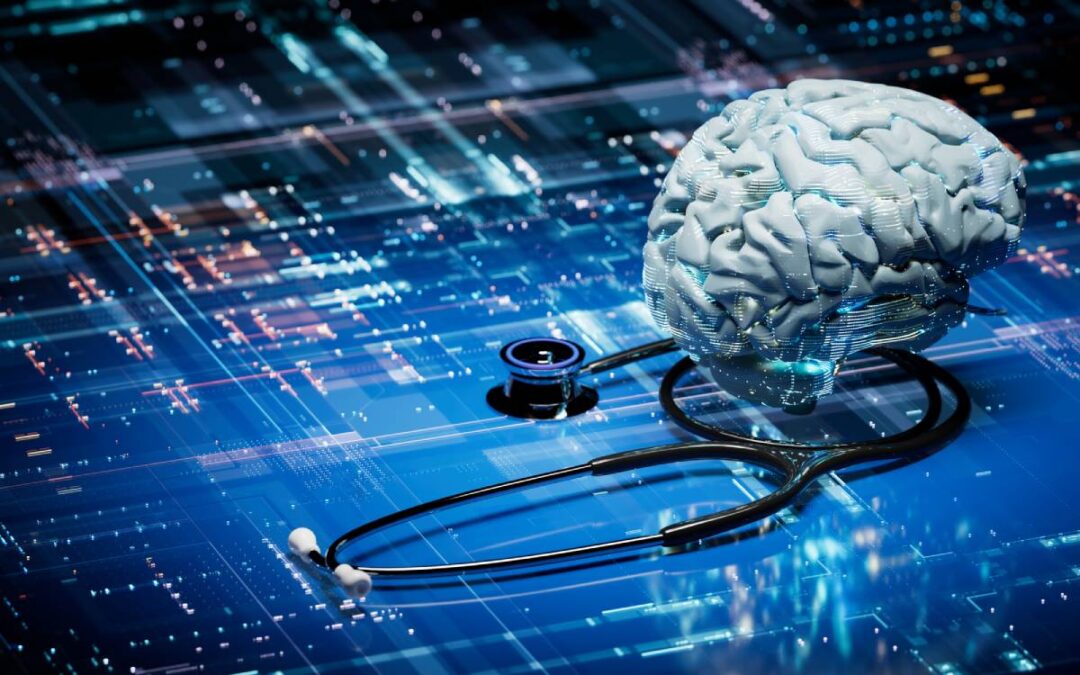Artificial Intelligence (AI) has transformed many industries, including medicine and healthcare. One area of healthcare where AI is expected to have significant impacts is medical diagnosis, with many anticipating advancements in accuracy, efficiency, and accessibility. AI-driven diagnostic tools leverage machine learning algorithms, deep learning models, and vast datasets to assist healthcare professionals in detecting and diagnosing various diseases. These technologies have the potential to improve early disease detection, reduce human error, and enhance patient outcomes.
In medical diagnosis, AI primarily operates through machine learning models trained on large datasets of medical images, clinical records, and laboratory results. These models identify patterns and correlations that may be imperceptible to human clinicians. Deep learning, a subset of AI, has been particularly effective in image-based diagnostics, like in radiology, dermatology, and pathology 1,2.
One of the most widely recognized applications of AI is in medical imaging. AI algorithms analyze X-rays, magnetic resonance images (MRIs), and computed tomography (CT) scans to detect abnormalities, such as tumors, fractures, and organ dysfunctions. AI-driven image recognition systems have demonstrated diagnostic accuracy comparable to, or even surpassing, that of experienced radiologists under the conditions of the research studies. Similarly, AI-assisted pathology tools examine tissue samples for early cancer detection, aiding pathologists in identifying malignancies with greater precision 3–5.
Natural language processing (NLP) is another critical AI tool used in medical diagnosis. NLP algorithms extract relevant information from electronic health records (EHRs), clinical notes, and medical literature, providing healthcare providers with real-time insights. These systems enhance clinical decision-making by identifying potential diagnoses based on patient history, symptoms, and test results 6,7.
The integration of AI in medical diagnosis offers numerous benefits. First and foremost, AI improves diagnostic accuracy by minimizing human errors caused by fatigue, cognitive biases, or limited experience. It enables early detection of diseases, which is crucial for conditions such as cancer, where early intervention significantly impacts patient survival rates. Furthermore, AI-powered diagnostic tools can increase healthcare accessibility, particularly in underserved areas where specialist availability is limited. Telemedicine platforms integrated with AI diagnostics enable remote consultations and second opinions, bridging gaps in healthcare disparities 4,5,8.
Despite these advantages, widespread use of AI in medical diagnosis has several challenges. One major concern is data bias. AI models trained on non-representative datasets may exhibit biases, leading to disparities in diagnostic accuracy across different populations—ensuring diverse and high-quality training data is essential for equitable healthcare outcomes.
In addition, the interpretability of AI decisions remains a challenge. Many AI algorithms make it difficult for clinicians to understand the rationale behind specific diagnoses, resulting in a lack of transparency that raises ethical and legal concerns, particularly regarding accountability in cases of misdiagnosis 9–12.
AI medical diagnosis represents a transformative shift in healthcare, improving accuracy, efficiency, and accessibility. While challenges such as data bias and interpretability persist, ongoing research and technological advancements continue to refine AI-driven diagnostic tools. As AI becomes increasingly integrated into clinical practice, it holds the potential to revolutionize patient care, paving the way for a future of precision medicine and enhanced global healthcare outcomes.
References
- Al-Antari, M. A. Artificial Intelligence for Medical Diagnostics—Existing and Future AI Technology! Diagnostics (Basel) 13, 688 (2023). DOI: 10.3390/diagnostics13040688
- Alowais, S. A. et al. Revolutionizing healthcare: the role of artificial intelligence in clinical practice. BMC Medical Education 23, 689 (2023). DOI: 10.1186/s12909-023-04698-z
- Sharma, S. Artificial intelligence for fracture diagnosis in orthopedic X-rays: current developments and future potential. SICOT-J 9, 21 (2023). DOI: 10.1051/sicotj/2023018
- Khalifa, M. & Albadawy, M. AI in diagnostic imaging: Revolutionising accuracy and efficiency. Computer Methods and Programs in Biomedicine Update 5, 100146 (2024). DOI: 10.1016/j.cmpbup.2024.100146
- Pinto-Coelho, L. How Artificial Intelligence Is Shaping Medical Imaging Technology: A Survey of Innovations and Applications. Bioengineering (Basel) 10, 1435 (2023). DOI: 10.3390/bioengineering10121435
- Locke, S. et al. Natural language processing in medicine: A review. Trends in Anaesthesia and Critical Care 38, 4–9 (2021). DOI: 10.1016/j.tacc.2021.02.007
- Aramaki, E., Wakamiya, S., Yada, S. & Nakamura, Y. Natural Language Processing: from Bedside to Everywhere. Yearb Med Inform 31, 243–253 (2022). DOI: 10.1055/s-0042-1742510
- How AI is improving diagnostics and health outcomes. World Economic Forum https://www.weforum.org/stories/2024/09/ai-diagnostics-health-outcomes/ (2024).
- Ennab, M. & Mcheick, H. Enhancing interpretability and accuracy of AI models in healthcare: a comprehensive review on challenges and future directions. Front Robot AI 11, 1444763 (2024). DOI: 10.3389/frobt.2024.1444763
- Mittermaier, M., Raza, M. M. & Kvedar, J. C. Bias in AI-based models for medical applications: challenges and mitigation strategies. npj Digit. Med. 6, 1–3 (2023). DOI: 10.1038/s41746-023-00858-z
- Cross, J. L., Choma, M. A. & Onofrey, J. A. Bias in medical AI: Implications for clinical decision-making. PLOS Digit Health 3, e0000651 (2024). DOI: 10.1371/journal.pdig.0000651
- Norori, N., Hu, Q., Aellen, F. M., Faraci, F. D. & Tzovara, A. Addressing bias in big data and AI for health care: A call for open science. Patterns (N Y) 2, 100347 (2021). DOI: 10.1016/j.patter.2021.100347





Recent Comments